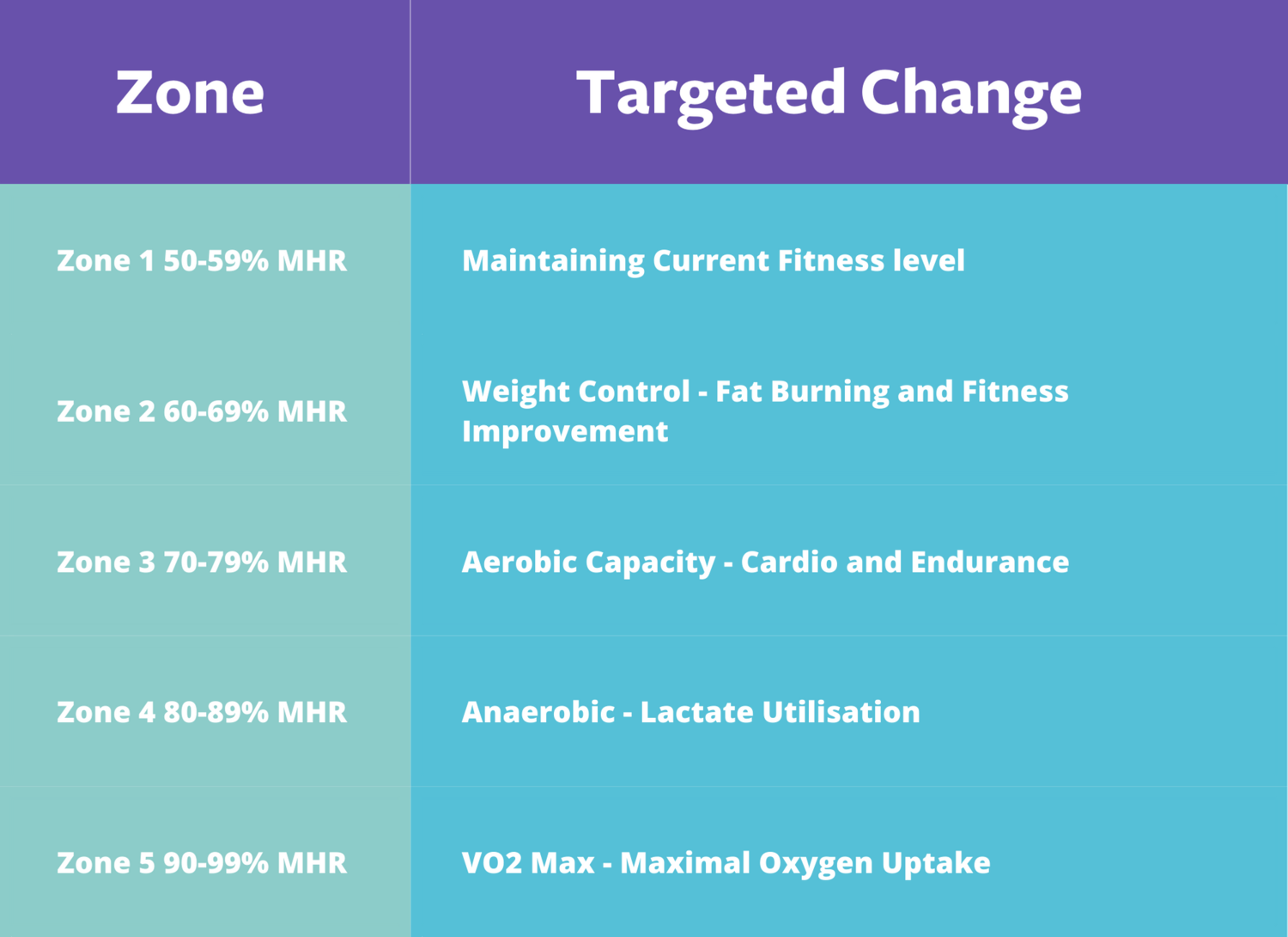During exercise, there are abundant physiological changes that occur within the body. Arguably, one of the most significant changes in our body happens to the heart and our cardiovascular system. By monitoring our heart rate (HR), we are aware of the intensity we are working and the physiological changes that are occurring. By understanding our HR training zones, we know exactly what heart rate we need to work at to meet our goals.
When discussing heart rate zones, it is important to understand how these zones are calculated. Heart rate zones are commonly measured as a percentage of an individual’s maximal heart rate (MHR). Commonly, maximal heart rate is calculated by a simple equation, 220 – Age (years). For example, a 45-year-old will have a predicted heart rate max of 175 beats per minute (bpm).
As seen below, there a variety of different targeted changes for each HR zone.

It is important to track your HR after an exercise session to measure recovery which is identified by the decreasing HR closer to its resting state. For interval exercise, it is important to understand when your body reaches the desired HR, before altering intensities as this will enhance maximal physiological changes.
Measuring HR after a cardiac event is also highly recommended to measure the effects of the intervention. By doing so, we can monitor the amount of stress we place on our heart and alter exertion to avoid causing further trauma to our heart. It is also important to understand the physiological changes that certain medications do to the heart, to again avoid causing any harm to the heart itself.
Handy Tip! If you don’t have a heart rate monitor it is quite easy to take your heart rate! Simply place two fingers over the inside of your wrist to find the beat. Count the number of beats for 15 seconds, double it, double it again and you have how many times your heart is beating per minute!




